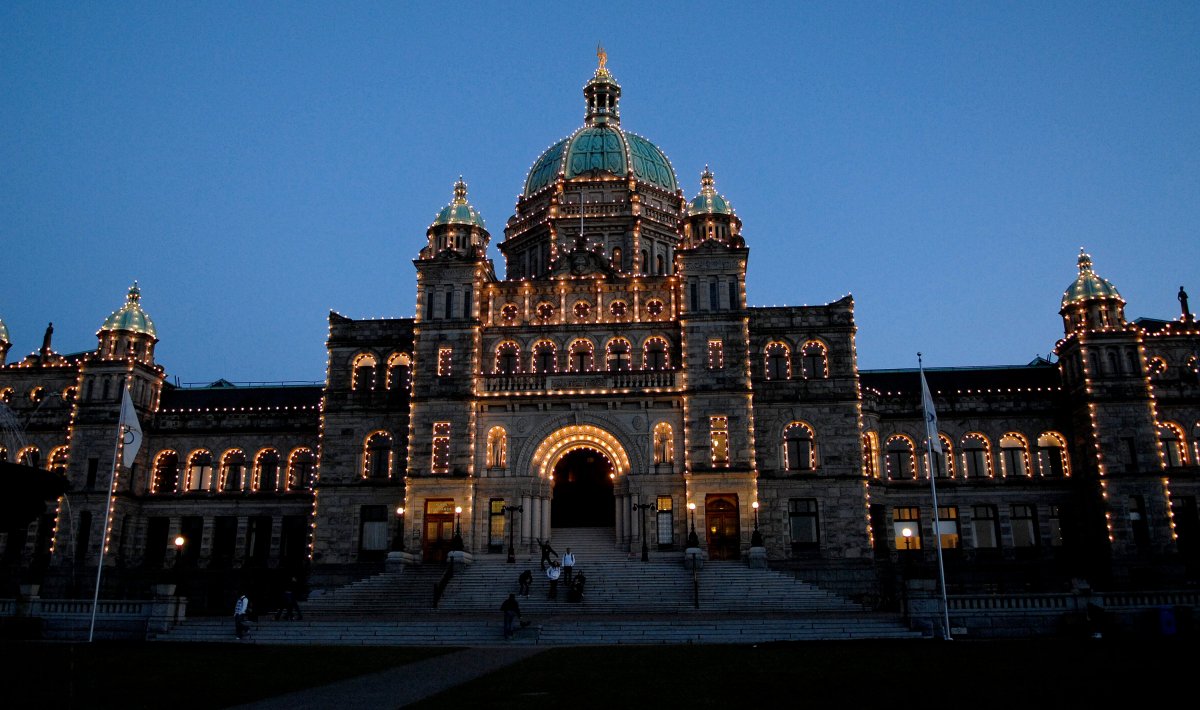No matter which party forms the next government in this province, the election results show the rural-urban divide that emerged from the 2013 election has become wider and perhaps more entrenched than ever before.

As a result, whichever of the two major parties forms government (either through a majority of seats or in some kind of arrangement with the B.C. Green Party) when the final count is determined next week faces some serious challenges when it comes to crafting all kinds of public policies.
The electoral map shows from a geographical size basis, almost the entire province is painted B.C. Liberal red outside of Metro Vancouver, Vancouver Island and the coastal region.
In Metro Vancouver the dominant color by far is NDP orange, a ribbon that extends from Point Grey to Mission.
Two solitudes. Two opposite takes on which party is the top choice to form government.
Inside the Metro region, the B.C. Liberals got pasted, losing 10 ridings and four cabinet ministers. And the party wasn’t even that competitive in some of the ridings (e.g. Burnaby North and North Vancouver-Lonsdale) it had held for years.
Voters turned their backs on the governing party in droves, particularly in the vital political battleground seats in Burnaby-Tri Cities-Surrey region. One assumes issues such as bridge tolls, Uber, trucking, housing and general malaise with a party in power so long came together to blast the B.C. Liberals out those seats.
The B.C. Liberals, locked-in it seems to creating jobs and little else, clearly didn’t see this coming. While it was obvious ridings such as Delta North, Vancouver-Fraserview and Burnaby North were vulnerable, party officials seemed shocked at their poor performance in much of Surrey, as well as North Vancouver-Lonsdale and even in some weakened Fraser Valley seats.
But it was a completely different story in much of the rest of the province. On election night, all kinds of riding were turning B.C. Liberal red as the NDP vote ebbed away rather quickly.
The NDP lost two regional seats and two Island seats – a much more modest loss than the B.C. Liberals, but emblematic of how the NDP is losing ground outside of Metro Vancouver – and saw its vote drop in those areas accordingly.
The NDP’s election strategy – and it was a good one, much better than it had in 2013 – was to zero in on Metro Vancouver seats and the dominant issues there, and pretty much write off much of the rest of the province.
NDP leader John Horgan was derided by some for rarely venturing outside the NDP’s comfort zone of Metro Vancouver and the capital region, but he may have the last laugh.
Until the final count is concluded, it’s not clear whether this strategy was good enough to actually win and form government.
FULL COVERAGE of the 2017 B.C. election
But if it does form government, how will the NDP re-connect with the vast regions of the province that appear to have turned away from the party, no doubt because of its shift away from heartland industries and towards environmental activism?
The B.C. Liberals face the same problem, only in reverse. Christy Clark’s hardhat routine only took her so far in the election. If she remains in power, how will her party reconnect with those Metro Vancouver voters who deserted her because talking about just creating jobs – and not about building transit, affordable housing, and dealing with crowded schools – simply isn’t enough for them?
It’s likely both the B.C. Liberals and the NDP will start paying attention to the policy needs of the upstart third party – the B.C. Greens – whose support in the legislature may put one of them in government.
But it would be a mistake for whoever forms government to simply pay attention to the Greens, whose vote grew impressively but whose political base remains rooted in a very small area – south Vancouver Island, without much evidence it is particularly strong elsewhere.
No, this disconnect between our urban areas and our Interior and North regions – and the resulting divide it creates that pushes one party out of one side or the other — needs addressing as well.
Hopefully the winning party realizes this is an untenable situation, and starts shaping policies aimed at closing that divide, and not widening it.
Keith Baldrey is the chief political reporter for Global B.C. This is reprinted from his weekly column with Glacier Media.



Comments